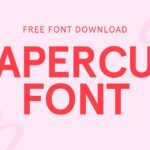Old German fonts offer a distinctive historical charm, often characterized by their strong, angular strokes and unique gothic flair. This guide explores essential old German font styles, helping you choose the perfect one for historical projects, branding, or design accents to evoke a sense of tradition and authenticity.
Feeling a bit lost when it comes to historical fonts? You’re not alone! Many of us admire the beautiful, intricate styles found in old German manuscripts or signage, but choosing the right one can feel overwhelming. These fonts, known for their dramatic flair and historical significance, can add incredible depth to your projects. But with so many options, where do you even begin? Don’t worry, we’re here to simplify things. This guide will walk you through the essential old German font styles, making it easy for you to select the perfect typeface. We’ll break down what makes them special and how you can use them effectively.
Understanding “Old German Fonts”
The term “Old German Font” isn’t a single, specific typeface. Instead, it’s a broad category that encompasses several historical German script styles that were prevalent from the late Middle Ages through the 19th century. These scripts are dramatically different from the Latin alphabets most of us use daily. They are characterized by their elegant, often complex, and highly decorative letterforms.
Historically, these fonts were largely handwritten or created by early printing presses. They were influenced by Gothic letterforms and evolved over centuries, leading to distinct styles. Understanding their origins helps us appreciate their unique visual characteristics and how to best employ them in modern design.
Key Characteristics of Old German Fonts
Before diving into specific styles, let’s look at what generally defines an “Old German Font”:
- Angularity: Many strokes are sharp and angular, with less emphasis on smooth curves.
- Flourishes and Ligatures: Extensive use of decorative strokes (flourishes) and combined letters (ligatures) for aesthetic effect and to save space.
- Verticality: A sense of upward movement and often a tall, condensed appearance in some styles.
- Contrast: Significant variation in stroke weight, sometimes with very thick downstrokes and thin upstrokes.
- Decorative Elements: Often feature intricate details, especially in capital letters, making them unsuitable for small text.
Essential Old German Font Styles
When people refer to “Old German Fonts,” they are usually thinking of a few major categories. The most prominent are Fraktur, Sütterlin, and Kurrentschrift. Each has its own history and visual personality.
1. Fraktur (Blackletter)
Fraktur is arguably the most iconic and widely recognized “Old German” style. Its name comes from the Latin word “fractus,” meaning “broken,” referring to the fragmented, angular appearance of the strokes that broke away from rounded forms. It emerged in the early 16th century and became incredibly popular in German-speaking lands for printing. It’s often categorized under the broader umbrella of Blackletter or Gothic typefaces.
Visual Characteristics of Fraktur:
- Extremely angular and broken strokes.
- Thick, heavy vertical strokes.
- Sharp, pointed serifs.
- Numerous ligatures (joined letters) and abbreviations.
- Ornamental flourishes, particularly on capital letters.
- Readability can be a challenge for modern eyes, especially in smaller sizes.
Historical Context:
Fraktur was heavily promoted by Emperor Maximilian I and was famously used for printing Martin Luther’s German translation of the Bible in 1534. It remained the dominant style for book and non-religious printing in Germany until the early 20th century. While it was widely used, the rise of Roman typefaces in the 19th century began to challenge its dominance. By the mid-20th century, especially after World War II, Fraktur fell out of widespread use in official capacities, although it persists in specific cultural contexts.
Modern Usage:
Today, Fraktur fonts are excellent for conveying a sense of history, tradition, or even rebellion. They are often seen in:
- Historical reenactment materials.
- Branding for breweries, traditional German restaurants, and heritage organizations.
- Occasional decorative elements in book covers, logos, and certificates.
- Tattoos and artistic expressions evoking a strong sense of ancestry or heritage.
Examples of Digital Fraktur Fonts:
Many digital typefaces emulate the Fraktur style. Some popular examples include:
- Old German / Fraktur (a common generic name for many digital fonts)
- UnifrakturMaguntia
- Fraktur-Schmalfette
- Fette Fraktur
It’s important to note that “Old German” is often used as a search term for Fraktur fonts in font marketplaces.
2. Sütterlin
Sütterlin is a handwriting script developed by Ludwig Sütterlin in 1911 for the Prussian Ministry of Education. It was designed to be taught in elementary schools and was the standard handwriting script in Germany from 1915 to 1941. Unlike Fraktur, which was primarily a print font, Sütterlin is a cursive script. It represents a simplification of earlier Kurrent handwriting, making it more legible and easier for children to learn.
Visual Characteristics of Sütterlin:
- Flowing, cursive style with connected letters.
- Simpler, more rounded forms compared to Fraktur.
- Less angularity and fewer sharp breaks.
- Distinctive loop shapes and ascenders/descenders.
- Often has a charming, almost childlike quality due to its simplified design.
- Significantly more readable than Fraktur for those unfamiliar with it.
Historical Context:
Sütterlin was a direct attempt to standardize handwriting instruction and improve legibility. It replaced the more complex traditional German cursive (Kurrentschrift) in schools. Its use was widespread across Germany for a quarter-century. Its official discontinuation in 1941 by the Nazi regime, along with other “non-German” scripts, marked the end of its mandated use, though many older Germans continued to write and read it.
Modern Usage:
Sütterlin is perfect for projects that aim to evoke a sense of early 20th-century Germany, personal correspondence from that era, or educational materials related to the period. It’s great for:
- Recreating historical documents or letters.
- Adding a personal, handwritten touch for a specific historical aesthetic.
- Family history projects or genealogical research.
- Branding for businesses seeking a nostalgic and slightly quaint feel.
Examples of Sütterlin Fonts:
Several digital fonts are based on the Sütterlin script:
- Sütterlin (often available by various designers)
- Neue Sütterlin
- Hermann Sütterlin
3. Kurrentschrift (German Cursive)
Kurrentschrift, or “current script,” refers to a family of standardized German handwriting scripts that evolved over centuries from various forms of early Gothic handwriting. It was in widespread use for personal correspondence, administrative documents, and various printed materials from the Renaissance through the 19th century and into the early 20th century, before Sütterlin was introduced. It’s a broader category than Sütterlin and includes many variations.
Visual Characteristics of Kurrentschrift:
- Highly cursive and often ornate.
- Can be very difficult to read for the uninitiated, with many variations in letterforms and ligatures.
- Includes a more angular quality compared to Sütterlin, sometimes resembling aspects of Fraktur.
- The thickness of strokes can vary significantly.
- Capital letters are often highly decorative and distinctive.
Historical Context:
Kurrentschrift was the everyday script for Germans for hundreds of years. Different regional and stylistic variations developed. Early printed books sometimes used Kurrent to mimic handwriting. The need for standardization eventually led to the development of Sütterlin as a simplified, more legible version for schools.
Modern Usage:
Kurrentschrift is best used when you need a very authentic, historical feel, particularly from the 17th to 19th centuries. It’s ideal for:
- Academic or historical reproductions of documents from that era.
- Designing props for historical films or theater.
- Creating an atmosphere of old-world scholarship or legal tradition.
- Signage for antique shops or historical sites evoking a specific period.
Examples of Kurrentschrift Fonts:
Finding digital fonts named “Kurrent” can be tricky, as styles varied. Some fonts aim to capture the essence of this script:
- Kurrent (generic name)
- German Kurrent
- Deutsche Kurrent
These fonts are often designed for readability while retaining the historical Kurrent character.
When to Use Old German Fonts
The distinctive look of old German fonts means they are best used strategically. They are not typically suited for body text in modern websites or publications due to readability issues for contemporary audiences. However, they excel in specific applications where their historical weight and style are an asset.
1. Branding and Logos
For businesses wanting to emphasize heritage, tradition, or a connection to German culture, these fonts can be powerful branding tools. Think:
- Craft breweries or distilleries.
- German bakeries or sausage makers.
- Cultural heritage societies or museums.
- Companies specializing in traditional crafts or goods.
Using an “Old German” font in a logo can instantly communicate a brand’s values and historical roots.
2. Thematic Designs
If your project has a specific historical theme, especially one related to Germany or Central Europe, these fonts can enhance authenticity. This includes:
- Event invitations for themed parties (e.g., Oktoberfest).
- Posters or flyers for historical reenactments or festivals.
- Website design for historical fiction authors or researchers.
- Educational materials about historical periods.
3. Decorative Elements
Even if not used for full headlines, elements of old German fonts can be great for decorative accents:
- Short, impactful titles or subheadings.
- Certificates, awards, or diplomas that need a formal, historical feel.
- Embossed or etched designs.
- Artistic projects where boldness and a unique character are desired.
Choosing the Right Old German Font Style for Your Project
Selecting the perfect “Old German” font involves considering the specific era, the desired mood, and, crucially, your audience’s ability to read it.
Era and Authenticity
If you need to represent the 16th to early 20th century printing style, Fraktur is your go-to. For handwritten materials from the early 20th century, Sütterlin is appropriate. For older, more varied handwritten documents (17th-19th centuries), look for Kurrentschrift-inspired fonts.
Readability vs. Authenticity
This is a critical balance. Fraktur and Kurrent can be very challenging to read. If legibility is paramount, consider using them only for very short text lengths or as graphic elements. Sütterlin offers a better balance, being more readable while still conveying historical charm.
Pairing with Modern Fonts
To ensure a design is readable and accessible, it’s often best to pair an old German font with a clean, modern typeface. Use the old German font for your headline or a small decorative element, and a simple sans-serif or serif font for the main body copy. This creates visual interest without sacrificing usability.
A Quick Comparison Table
Here’s a handy table summarizing the key differences between the most common “Old German” font styles:
| Style | Era of Dominance | Primary Use | Visual Feel | Readability | Key Characteristics |
|---|---|---|---|---|---|
| Fraktur (Blackletter) | 16th – early 20th century (printing) | Printing (books, official documents, signage) | Bold, angular, broken, gothic | Low (especially for modern eyes) | Sharp angles, heavy strokes, many ligatures, serifs |
| Sütterlin | 1915 – 1941 (handwriting script) | Handwriting, school instruction | Flowing, cursive, simpler, rounded | Medium (easier than Fraktur) | Connected letters, distinct loops, less angular |
| Kurrentschrift (German Cursive) | ~17th – early 20th century (handwriting & printing) | Handwriting, official documents, general use | Ornate, cursive, varied, can be angular | Low (highly variable) | Connected letters, elaborate capitals, many variations |
When looking for fonts online, searching terms like “Fraktur,” “Gothic font,” “Blackletter font,” “Sütterlin font,” or “German script font” will yield relevant results. Many font foundries offer beautifully digitized versions of these historical scripts. For instance, the Library of Congress provides resources on German legal systems, which often involved historical script usage, offering context for such styles.
Designing with Old German Fonts: Tips and Best Practices
Using these unique fonts successfully requires a thoughtful approach. Here are some tips to help you:
1. Keep It Minimal
Overuse can quickly make a design feel cluttered and unreadable. Treat these fonts as impactful accents rather than workhorses. A strong Fraktur headline can make a statement, but the supporting text should be in a legible, modern font.
2. Understand Context
Ensure the style aligns with the historical period or cultural context you aim to represent. A Fraktur font might be perfect for a centuries-old German fairy tale, while Sütterlin would better suit a letter from a World War I-era German soldier.
3. Font Pairing is Key
As mentioned, pairing is crucial. Great partners for old German fonts include:
- Clean Sans-Serifs: Like Open Sans, Montserrat, or Lato, for a modern contrast.
- Readable Serifs: Such as Merriweather, Georgia, or Times New Roman, for a more classic but still accessible feel.
- Minimalist Typefaces: To let the historical font command attention without competing.
4. Size Matters
For Fraktur and Kurrent, larger sizes are generally better for readability. Sütterlin can sometimes be used in slightly smaller sizes due to its more cursive nature, but still avoid very small print body text.
5. Test for Readability
Before finalizing your design, test it with people who are not familiar with old German fonts. Ask them if the text is easy to read. This is especially important for any text that needs to convey essential information.
Frequently Asked Questions About Old German Fonts
What exactly is an “Old German Font”?
An “Old German Font” is not one single font but a category of historical German scripts and typefaces. The most common styles include Fraktur (a blackletter print font), Sütterlin (a simplified cursive handwriting script), and Kurrentschrift (older, more varied German cursive). They are known for their distinctive, often angular or ornate, letterforms.
Is Fraktur the same as Sütterlin?
No, Fraktur and Sütterlin are distinct. Fraktur is a style of print typography characterized by broken, angular strokes, while Sütterlin is a handwriting script that is more cursive, rounded, and simplified, designed for easier learning and readability in the early 20th century.
Are old German fonts hard to read?
Yes, many old German fonts, especially Fraktur and Kurrentschrift, can be very difficult for modern audiences to read. This is due to their complex letterforms, extensive use of ligatures (joined letters), and unfamiliar stylistic conventions. Sütterlin is generally more readable than Fraktur.
When should I use an Old German font?
Old German fonts are best used for specific purposes where historical authenticity, cultural heritage, or a unique decorative flair is desired. Examples include branding for traditional German businesses, thematic design elements, historical reenactment



